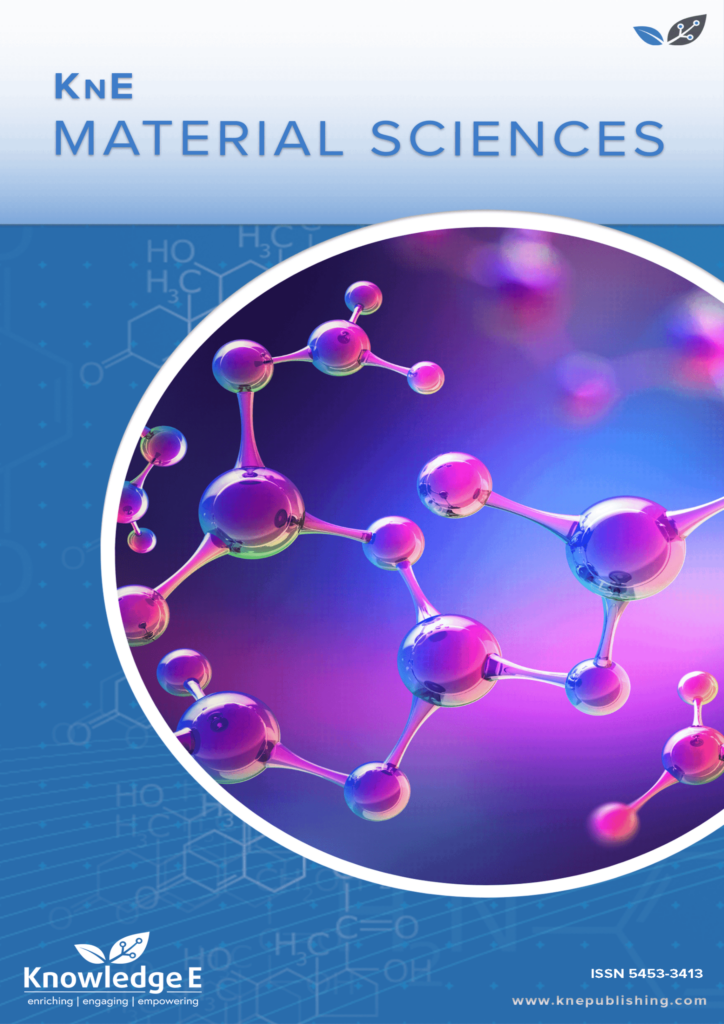
KnE Material Sciences
ISSN: 2519-1438
The latest conference proceedings on physical materials, energy materials, electrical materials.
Clinical assessment of xenograft combined with knitted TiNi-based mesh implant in femoropopliteal bypass surgery: a Case Report
Published date:Jul 17 2017
Journal Title: KnE Material Sciences
Issue title: Shape Memory Biomaterials and Implants in Medicine (SMBIM)
Pages:410-417
Authors:
Abstract:
Treatment of patients with peripheral artery diseases is one of the most difficult issues in vascular surgery. The overall prevalence of peripheral arterial disease varies from 3-10% among the population aged 40-59 years old and among people over 70 years old - up to 15-20%. In the majority of cases atherosclerosis is the main cause of peripheral arterial disease. Autovein is considered a prosthesis of choice and is the most commonly used graft in the bypass surgery. However, it has been deemed impossible in 30% of cases due to its diameter, length or varicose lesions. Despite the technical advances, has not yet developed an ideal vascular prosthesis. Thus, there is a need of search for new materials and modifications of available materials, with the goal of creating a prosthesis for properties close to ideal. In this article we present first case report in the world about usage xenograft with protective external tubular mesh made from superelastic shape-memory nitinol as bypass material. This case shows that the xenoprosthesis with external tubular nitinol mesh support for prophylaxis of aneurysm formation can be used as vascular conduits in bypass surgery. Further randomized controlled trials needed.
References:
[1] Die moderneChirurgie des Circulationsapparates T. Gluck Berliner Klinik: 1898 DOI: http://dx.doi.org/https://doi.org/10.1007/bf02792100
[2] The surgery of blood vessels etc A. Carrel Johns Hopkins Hospital Bulletin, 190: 18-28, 1907 DOI: http://dx.doi.org/https://doi.org/10.1001/jama.1964.03070210125057
[3] 12 years' experience of usage bioprosthesis for infrainguinal arteries replacement L. S. Barbarash, S. V. Ivanov, I.Y. Zhuravleva, A. I. Anufriev, Y.V. Kazachek, Y.A. Kudryavceva, M.G. Zinec Angiologiyaisosudistayahirurgiya [in Russian], 12: 91-97, 2006
[4] Über das Vorkommen von Nitrobakterien im Meere : Inaugural-Dissertation zur Erlangung der DoktorwÜrde der hohen philosophischen Fakultäder Künigl Thomsen Peter Christian-Albrechts-Universität zu Kiel: Schmidt & Klaunig, Kiel, 1908 DOI: http://dx.doi.org/https://doi.org/10.5962/bhl.title.13500
[5] The use of arterial implants prepared by enzymatic modification of arterial heterografts: II. The physical properties of the elastica and collagen components of the arterial wall N. Rosenberg, J. Henderson, G. H. Lord, J. W. Bothwell, E.R. Gaughran AMA archives of surgery, 74: 89-95, 1957 DOI: http://dx.doi.org/https://doi.org/10.1001/archsurg.1957.01280070093011
[6] Bovine arterial grafts: an experimental study G. de Takats, I. D. Thompson, W.C. Dolowy Annals of surgery, 150: 1959 DOI: http://dx.doi.org/https://doi.org/10.1097/00000658-195912000-00008
[7] Use of Enzyme-Treated Heterografts as Segmental Arterial Substitutes: Influence of Processing Factors on Strength and Invasion by Host N. Rosenberg, J. Henderson, G. H. Lord, J.W. Bothwell, E.R. Gaughran Archives of Surgery, 85: 192-197, 1962 DOI: http://dx.doi.org/https://doi.org/10.1001/archsurg.1962.01310020022006
[8] Tanned collagen arterial prosthesis of bovine carotid origin in man. Preliminary studies of enzyme-treated heterografts N. Rosenberg, A. Martinez, P.N. Sawyer, S.A. Wesolowski, R.W. Postlethwait, M. L. Dillon, Jr Annals of surgery, 164: 1966 DOI: http://dx.doi.org/https://doi.org/10.1097/00000658-196608000-00010
[9] A prospective, randomized comparison of bovine carotid artery and expanded polytetrafluoroethylene for permanent hemodialysis vascular access P.T. Kennealey, N. Elias, M. Hertl, D.S. Ko, R.F. Saidi, J.F. Markmann, T. Kawai Journal of vascular surgery, 53: 1640-1648, 2011 DOI: http://dx.doi.org/https://doi.org/10.1016/j.jvs.2011.02.008
[10] Bovine carotid artery (artegraft) as a hemodialysis access conduit in patients who are poor candidates for native arteriovenous fistulae M. Harlander-Locke, J.C. Jimenez, P.F. Lawrence, H.A. Gelabert, B.G. Derubertis, D.A. Rigberg, S.M. Farley Vascular and endovascular surgery, 48: 497-502, 2014 DOI: http://dx.doi.org/https://doi.org/10.1177/1538574414561231
[11] Utilization of shape memory in external vein-graft meshes allows extreme diameter constriction for suppressing intimal hyperplasia: a non-human primate study P. Zilla, M. Wolf, N. Rafiee, L. Moodley, D. Bezuidenhout, M. Black, T. Franz Journal of vascular surgery, 49: 1532-1542, 2009 DOI: http://dx.doi.org/https://doi.org/10.1016/j.jvs.2009.01.068
[12] Vein graft failure: from pathophysiology to clinical outcomes M. R. de Vries, K.H. Simons, J.W. Jukema, J. Braun, P.H. Quax Nature Reviews Cardiology, 13: 451-470, 2016 DOI: http://dx.doi.org/https://doi.org/10.1038/nrcardio.2016.76
[13] Physical-mechanical properties of alloys on the basis of titanium nickelide TN-10, TN-20, TN-1V M.I. Soldatova, V.N. Hodorenko, V.E. Gunthe Bulletin of the Tomsk Polytechnic University [in Russian], 322: 135-139, 2013